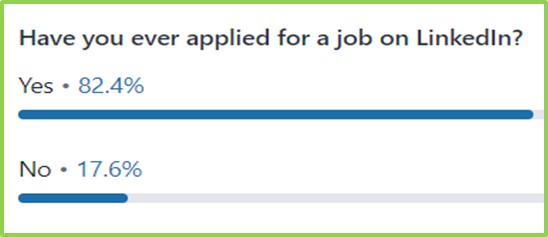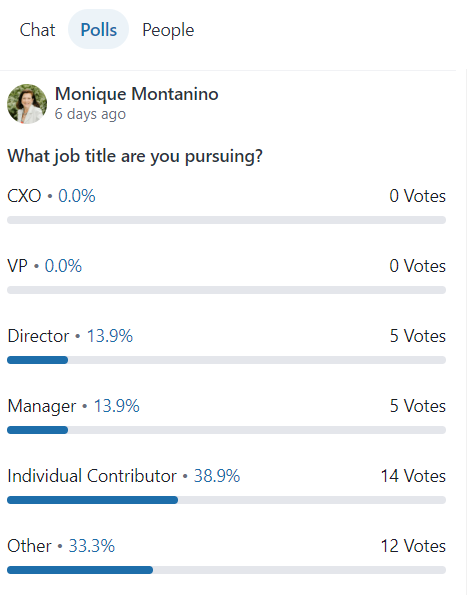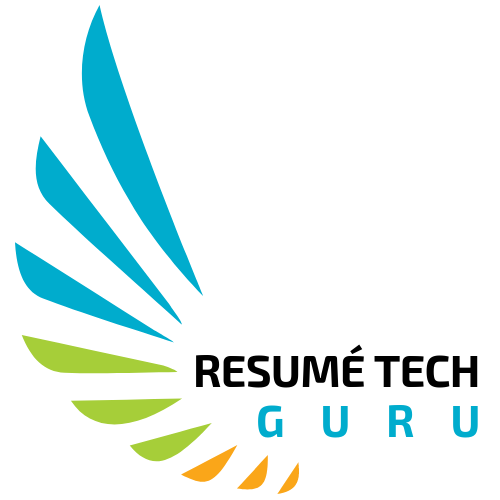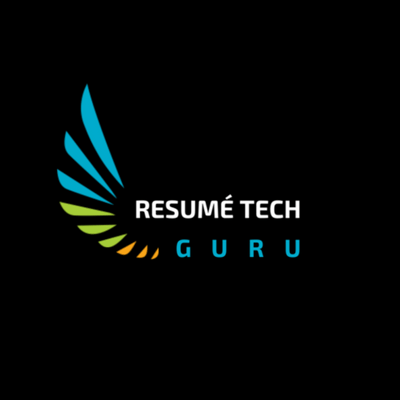Last month, 580 speakers attended the 3-day Women In Tech Global Conference with over 10,000 registrants. As an avid learner, I enjoyed attending and being a speaker for the career growth track.
As part of “LinkedIn Secrets Revealed: How to Stand Out to 1 Million Tech Recruiters,” I shared my top 10 tips.
Innately curious about who attends my sessions, I conducted three polls.
- LinkedIn Usage: Over 80% of the women had applied for a job through LinkedIn.
- Geography: Most were tuning in from North America and Europe, probably related to the early morning session.
- Title Search: Job seekers pursued individual contributor or non-management roles equally.

The challenge with chat-only workshop interaction was that I failed to capture the big picture. I wish I knew what attendees meant by “other” in response to the title they are seeking. But I digress.

All-Star Profile
LinkedIn has a 20-year history and was acquired by Microsoft in 2016 for a cool $26.2 billion in cash. Over 850 million professionals are registered on LinkedIn. My anniversary date for joining is November 2007. I owe Jeff Dennison a high five for asking me to participate since I now use it weekly in my career consulting practice.
For some reason, I vividly recall that by filling in sections, LinkedIn indicated completeness, including Beginner, Intermediate, Advanced, Expert, and All-Star status. Being competitive, I did what it took to obtain an All-Star profile. After all, I love Major League Baseball and attending Seattle Mariners games.
Do you have a LinkedIn Allstar Profile for tech recruiters?
Earthweb says, “58 million companies are listed on the LinkedIn platform, and 87% of recruiters use it to scout new employees.” Based upon a database of 30 million profiles, career expert Zippia estimates there are over 210,000 technical recruiters in the U.S.
During my Women In Tech session, I shared how the attendees could become LinkedIn All-Stars for these tech recruiters. All it takes is for you to complete the following actions.
- Professional profile headshot
- Compelling headline
- Personalized “About” summary
- Detailed work experience
- Education
- Job skills featuring technical and interpersonal expertise
- Recommendations from executives, colleagues, and direct reports
It sounds simple enough, yet most people struggle with how to do it. It’s time to hit the easy button.
Recruiter Attraction Magnet
I walked through 10 actionable LinkedIn tips on becoming a recruiter attraction magnet in my session.
#1 Safety Check: If you don’t want your colleagues or the boss to know you’re updating your profile, go to your LinkedIn visibility settings and select “Off” for the item under “Visibility of Your LinkedIn Activity.”
#2 Images: If your headshot is more than five years old, it’s time to update it. Professional photographers charge about $250 and will come to your location. You can also have your significant other take a new photo against a non-busy background with your smiling face.
Studies indicate we don’t select our best photos. A free, data-science-backed analysis based on how competent, likable, and influential you appear in your photo is available at photofeeler.com.
Make the best use of the background space behind your photo by showcasing your professional brand with an image. You can access royalty-free images at Canva.com, Pexels.com, and Unsplash.com. Log into linked.com vs. the LinkedIn phone app to change the background image.
#3 Headline: I develop headlines for my clients with three components in mind, including industry-recognized titles, domain expertise, and competitive differentiator. To make these three items stand out, I insert separator symbols such as the pipe vertical line (|) key or Unicode bullets (■ ●).
Regarding an industry-recognized title, it’s easy to discover what that is by conducting a LinkedIn job search. For example, I recently searched for a client role in the US, and “Chief Information Officer” provided 2x more job postings (4K) vs. “CIO” (2K). You can cover your bets and post it as “Chief Information Officer (CIO)” on your LinkedIn profile headline.
#4 “About” Summary: Consider this section your elevator speech when the recruiter asks, “So, tell me about yourself.” I advise clients not to respond as if they are on the firing line. Instead, why not take the same approach you use with someone at a business conference and explain what you do and your philosophy regarding leading successful teams and achieving incredible results? The reality is that most people on LinkedIn write about themselves in the 3rd-person. Weird, it’s your profile, not an introduction at a keynote ensued by a laundry list of skills since the beginning of your career. Let’s turn that around and position yourself for the next executive role you want. When you’re hiring someone, what impresses you in the interview? It’s time to interview yourself or ask colleagues or a significant other.
One of my favorite summaries has a line that caught my attention and made me smile: “Leader with a talent for driving strategic relationships with clients and finding mutual wins in complex negotiations. I have negotiated with terrorists; executives do not intimidate me.” It’s from a former sales colleague of mine at CenturyLink. Please do more of that. We’re here to be dazzled, not bored.
#5 Industry & Location: This one is quite simple. Use the crowd-sourced categories in the drop-down menus. Think like a recruiter versus being micro-specific to where you live. I lived in a small county of 20,000 called Port Ludlow, WA. No one outside the state was familiar with the town, so I would say it was near Seattle. Many of my tech exec clients work at Microsoft in Redmond, WA. We always use the larger metro area of Seattle, WA.
#6 Job Description: Similar to your resume, it’s best to keep things short and simple for each job description. Begin with your overarching responsibility statement. Follow up with 2-3 bullets of accomplishments applying the Amazon STAR method. Each bullet begins with an action verb and should contain a metric related to the Situation, Tactics, Actions, and Results you accomplished.
#7 Education: Select the drop-down menu for a list of degrees, which is crowd-sourced on how recruiters search. If you’re concerned about ageism, skip the graduation dates. Exceptions for removing dates are if you recently completed a college degree or an executive MBA.
#8 Job Skills: Please add to your skills section and delete insignificant items. It will help with ATS matching for the job listings. You can add up to 100 skills. I suggest focusing on 50 skills so you can obtain colleague endorsements. Prioritize industry terminology that recruiters utilize rather than internal corporate babble.
What AWS and Microsoft discuss in meetings might be the same but within different vernaculars, so cover all your bases. The LinkedIn areas of expertise categorize your skills by “Industry Knowledge” and “Tools & Technologies.”
Did you know the top three skills on your profile are ranked quantitatively, and you can change them?
- Click the “Me” icon at the top of your LinkedIn homepage.
- Click “View Profile.”
- Scroll down to the “Skills” section and click the pencil icon to edit.
- On the far upper right, click the ellipses (…) and select the “Reorder” icon.
- Click and drag the reorder icon (4 horizontal bars) to the right of the corresponding skill you’d like to move around.
Have colleagues endorse three interpersonal skills, and here’s a tip: tell them which ones. It’s an efficient way to increase your skill rankings where they matter to you and recruiters.
#9 Recommendations: I know it’s sometimes challenging to ask for help, but get over it. You may have had the same Dutch-like parents who trained me early on that it’s better to give than receive. I muster the courage to ask for recommendations. It’s OK to receive LinkedIn recommendations; you’ve earned them.
I tell my clients to ask for recommendations and be extremely specific about a skill they want to highlight. The ones about “she’s a nice person” don’t convey to a recruiter or hiring manager what executive leadership benefits you bring to the table. Request recommendations for leadership qualities such as:
- Coach
- Cross-team collaborator
- Master communicator
- Mentor
- Strategic problem-solver
- Strong motivator
- Trustworthy
- Visionary
Here are the steps to take:
- To request a recommendation from your profile, click the “Me” icon at the top of your LinkedIn homepage.
- Select View profile. Scroll down to the “Recommendations section” and click.
- Select the plus sign (+) in the upper right and highlight “Ask for a recommendation.”
- Type the name of the connection you’d like to ask for a recommendation in the “Who do you want to ask?”
#10 Open to Recruiters: Armed with your All-Star profile, you’re now ready to notify recruiters that you’re open to being contacted. Yes, you’ll initially receive some odd “doesn’t even vaguely represent me” requests, but give it a whirl.
Here’s how you tell recruiters you’re available without letting your network or boss know.
- Click on the “Open To” drop-down that appears below your photo on the left-hand side
- Select “finding a new job”
- Add five “Job Titles”
- Select “Location types”
- Determine a “Start date” from immediately to flexible and casually looking
- Add “Employment type” from full-time, part-time or contract
- For “Visibility” select “Recruiters only”
- Press “Save”
From a time investment perspective, this All-Star profile activity will range anywhere from 2-5 hours depending on your starting point.
Best wishes to you in your job search journey.


